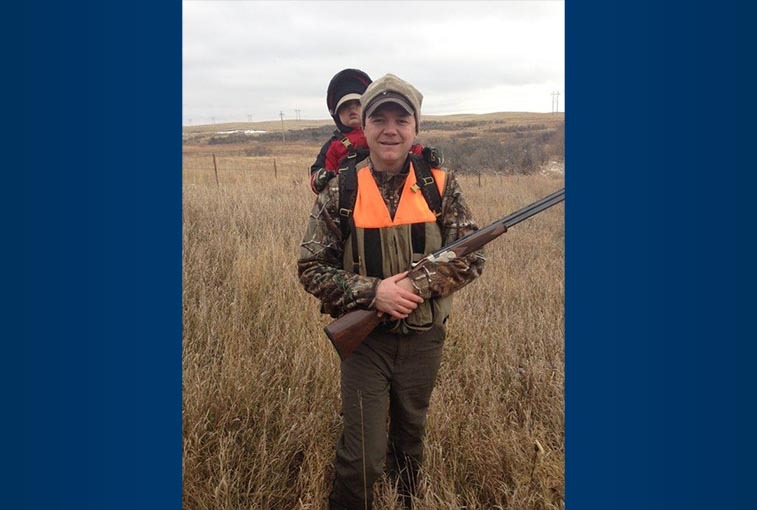Loud noises from farm equipment, heavy machinery, guns and other everyday sources are a normal part of life for a lot of people. However, not everyone exposed to those sounds for hours at a time wear ear protection that could spare them long-term damage.
Brady Ness, Au.D., an audiologist at Sanford Health in Bismarck, North Dakota, enjoys hunting and shooting with his kids, but he always makes sure they protect their ears. He said the use of ear protection is paramount to avoid any permanent sensory hearing loss down the road.
“At the Sanford Hearing Center in Bismarck, we see multiple cases each week in people who have a lengthy exposure who either didn’t know about ear protection or chose not to wear it and now, as a result, have high frequency hearing loss,” Dr. Ness said.
One of the most common symptoms of hearing loss is people complaining of tinnitus, or ringing in the ears.
“That’s usually a classic sign of damage to the hair cells in the cochlea,” Dr. Ness said. “They’ll also notice a sense of fullness because it just feels like their ears are plugged or muffled because they lost some high frequency sensitivity. And then the obvious one is communicative issues -– these people are having trouble hearing background noises, hearing those softer spoken females or children.”
Duration and intensity
Dr. Ness has had patients as young as 10 years old who go out for a weekend of shooting a .22-caliber gun with their dad and come back with hearing loss.
“The effects of noise on your ears is not only the duration that you are around it but also the intensity level,” Dr. Ness said. “So we’re talking shotguns, 150-plus decibels, magnum-caliber rifles with over 160 decibels. Every time you pull the trigger with that type of intensity you cause damage to those little hair cells.”
When looking to purchase ear protection, a person might get overwhelmed by all of the choices available to them. Despite all of the options, Dr. Ness said the most effective type of ear protection a person can buy is the type they will actually use.
“It doesn’t matter how fancy of an ear protection you have if it’s sitting in your pocket or if it’s sitting back in the truck the whole time,” he said. “There are different types of ear protection and you just need to find which type is best for your situation.”
There are two different types of ear protection on the market, active and passive. The more traditional type of ear protection is passive, which is an earplug that will block out all noise.
“The active type are the electronic ones that we hear about that will amplify sounds to some degree and then as soon as they reach a damaging level, a circuit in the device goes in and cuts that sound down and keeps it down below damaging levels,” Dr. Ness said.
No matter what type of ear protection a person prefers, some sort of ear protection is better than no ear protection.
More stories on ear protection
- Hearing loss a common but treatable issue
- Minimizing hearing loss on and off the jobsite
- Hearing loss, hearing aids and preventing further damage
…
Posted In Ear, Nose & Throat, Health Information, Healthy Living
